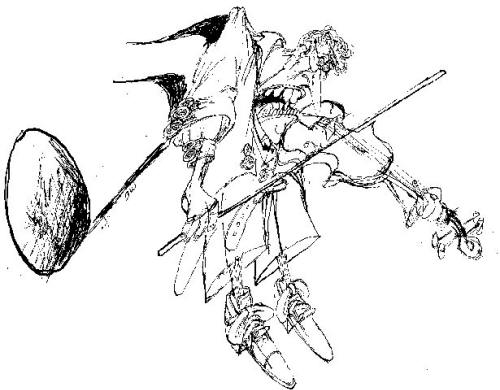|
You are reading the older HTML site
Positive Feedback
ISSUE
26
The AudioNemesis DC-1
DAC
When you have a CD Player and an integrated amp that have been specifically designed to "play together" as Rotel has done with the RCD-1072 and the RA-1062, you can either decide that that's that, you've made your best shot at a "relatively inexpensive" digital front-end and have done with it, or you can take advantage of the fact that Rotel has provided a digital output on the CD player and accept the proffered invitation into the first circle of "upgrade hell" by looking for an outboard DAC.
The unending succession of circles in "upgrade hell" are generated by an audiophile's capacity to always find something wrong if he only listens harder. Of course, such analytic listening undermines the possibility of letting the music, rather than the sound, connect with you. To connect on the music's terms, you have to be relaxed enough to let it come to you. Thus my "clenched jaw" test. As I concentrate on analyzing sound, my jaw asks: can you really enjoy music being that up-tight? Bad recordings go right for my jaw (for you it may be your shoulders, or your rear-end). So, for what it's worth, I've learned that there's a single question for judging whether a "relatively inexpensive" upgrade is honestly worthwhile: Am I relaxed enough to freely follow wherever the music is intimately and compellingly taking me? Let me pass along the positive clues that accompany the "clenched jaw" test. I feel invited to lean slightly forward as if inclining to accept a greeting from someone I've just found immediately attractive. And once I've let myself be drawn into the attraction, I discover a sudden wealth of impressions, one immediately leading to another, that collectively carry with them the promise of a moving insight. Something that can begin with a small inflection, say, the hush of pain in Rosanne Cash's voice in "Mid-Air" from 10 Song Demo that carries with it the promise of resolution if I just keep listening to the end of the song. With the above in mind, let's turn to the AudioNemesis DC-1. First, if you want a look at the theory behind its engineering, go to www.sakurasystems.com/articles/Kusunoki.html to read about "Non-oversampling Digital filter-less DAC Concept." Since my Ph.D. is in philosophy, not digital engineering, I won't pretend to know something I don't. The technical mastery that translated filter-less DAC theory into the DC-1 is Fabio Camorani's responsibility (you can read the review posited at tnt-audio for those details: www.tnt-audio.com/sorgenti/anemesisdc1_1_e.html). My responsibility as a reviewer is to listen to how Fabio has translated engineering technique into musical generosity. As I noted above, the basic test is: Can I more freely follow wherever the richness of musical impression leads? But then also note the paradox that if I'm set on just listening analytically, I will inevitably end up undoing the generosity of the music itself. Yet don't I have to listen analytically to "make a judgment"? No, not quite. Rather I have to notice if I get caught off-guard, if I find myself surprised by an unexpected, perhaps even ironic, twist. Then, of course, I can always go back to the "clenched jaw test." At the end of the first installment I already introduced my first surprise with Fabio's DAC. Two tracks into 10 Song Demo, I suddenly realized that I had ended up setting the remote volume control about 20% higher than normal for this disc. And that on literally the very first listening of the "just out of the box" DAC. Two weeks into listening, I had confirmed that opening surprise: I could consistently listen at a higher volume level regardless of the kind of music involved (though I confess that my sense of scale in music always tends toward the intimately beautiful rather than the overwhelmingly sublime). I have no idea how Fabio has achieved what I'm interpreting (in my technical ignorance) as a very "undigital" lower noise-floor. "Un-digital" because so simply natural. Perhaps it's become odd to realize the degree to which what usually passes for digital "silence" is still so resolutely unnatural in its texture. For silence has texture (as John Cage famously established in a series of musical (and theatrical) experiments). Again this is the essential musical reason why tubes are still with us: the texture of the silence from which emerges the signature overtones of this or that instrument or human voice is, well, so native to the ear with tubes. Which is, yet again, why I will indeed be seeing about substituting a tube amp for the Rotel. And which is also why there have been so many "hybrid" tube variations on CD players as well as DACs. And here it was with Fabio's DAC. I could listen louder because the noise-floor was not only lower, but what I'm calling the texture of silence was completely easy on the ear, as if I was naturally attuned to the bloom of music itself as it emerged. Now let's ask: Can the Rotel CD player by itself recreate music with that natural ease? Yes it can, as I proved to myself again a month into listening to Fabio's DC-1. But not as consistently. In the first installment I mentioned that the initial itch to wonder about returning to "upgrade hell" followed some episodes of the Rotel front-end announcing itself as a front-end in the mid-highs. In contrast, from the very beginning of listening to the DC-1, there has been no issue with the mid-highs. I'm quite sensitive to sibilant distortion. The only time I've noted it with the DC-1 is on recordings that are just plain painfully sibilant. Which shows the DC-1 is not some kind of "romantic" filter. It's true to the recording precisely by making more of it available. Not in that "in your face" ruthlessly revealing way, but just available, like when you have a good friend who talks softly enough so that you find yourself naturally leaning a little toward him to catch the tone that makes his point.
So there I was, time and again, leaning slightly forward to catch the tone emerging in these songs by Cash, or, say, by Dar Williams. I thought I knew them so intimately well. But here with Fabio's DAC, there was a further freeing resolution of those familiar tonalities and textures of sound and lyric. Songs that have been threatening to become hackneyed in their familiarity breathed new life in a way that caught me smiling. For some specific examples, let's continue with Rosanne Cash's 10 Song Demo: 1. The opening guitars on track #3 "The Summer I Read Collette": I'm used to them being a little too forward and insistent in their drive. With the DC-1 the pace was slightly slower, the sound a little more recessed, but the guitars sounded like unique separate instruments rather than a generic "guitar sound," that is, the timbral signature was more authentic. And since Cash's voice is very clearly meant to juxtaposed with the guitar line, what then became apparent was that even if it was less forward it was actually easier to follow because their sound was more complexly textured as guitars. The Rotel by itself presented a more generic guitar sound that was both "faster paced" and "more forward" but given that the vocal dynamics were preserved without harshness, I found myself preferring the clearly more natural sound with the DC-1 in the chain. Concerning sibilants, a line like "That was the summer that followed the spring" with its emphatic "s" emphasized all the more in the way "spring" is pronounced came out in a completely natural way with the DC-1 while in comparison was distractingly forward with the Rotel alone. 2. To get completely analytic in a nasty way: On track #5 "Bells & Roses": there's a recording artifact 51 seconds into the track where the miking picks up what sounds like a very quick double hand-clap. With the DC-1's slightly more recessed sound was it still there? Well, yes. With the kind of attention that is guaranteed to destroy my ability to enjoy the music for its own sake, I could just pick it out. But I had to listen very carefully to do so. What struck me as interesting was that when I did hear it, it actually came out more distinctly as an artifact. That is: it wasn't loud enough or forward enough to be distracting, and it really didn't present itself as, so to speak, "to be interpreted." In my former ridiculously expensive high-end life, whatever this artifact actually is, it would present itself clearly enough to be distracting in the sense of in effect asking me to figure out what it was. That's where the "two very quick hand-claps" came from. Do I actually know that's what the artifact is? Well, no. But with the DC-1 it simply wasn't an issue since, though, yes, I could strain to pick it out, even an audiophile would have been so much more impressed by the naturalness of what was actually going on in the song so as to equally quite naturally ignore it. We naturally ignore all sorts of very minor sounds that don't, of themselves, "make sense," when we are honestly involved in something we enjoy—like "Bells & Roses." 3. Finally, and much more importantly than the above "analytic" example, there's the final track of 10 Song Demo, #11, "Mid-Air," which is a hauntingly intimate exploration of the possibility of your still "being there" to forgive someone close who has caused you deep pain. The opening lines go: "I'm haunted by your poems/and the color of your hair,/a world unfolds outside my door/but will I find you there?" The question, "will I find you there?" is then repeated in different configuration of intimacy and pain, in the rest of the stanzas, so how it is asked the first time sets the "key" that will then be varied in those other stanzas. Whether you can reach into the emotional depths of the song then depends on how well you can hear the way Cash subtle inflects that first "but will I find you there?" And here I found myself surprised again by the DC-1. For I now heard with it in the chain was that Cash allows the natural emphasis of the "there" at the end of the question to trail off into a half-whisper, as if wistful in its wondering if the person addressed will still be found in the world not just outside Cash's door but inside it as well. All the other inflections of the ending "there" in the question, "but will I find you there," come back to that opening half-whispered wistfulness. Something I realized more fully than I have ever before after adding the DC-1. Meaning: the DC-1 helped me hear over again as if the first time this song that I thought I knew so well; it allowed me a more intimate understanding of the song's own intimacy. That's what I mean by having engineering technique serve musical generosity. To sum up: Is the AudioNemesis DC-1 DAC an honestly worthwhile upgrade? In a word: yes. It is exactly the kind of upgrade that Rotel kindly provided for with its digital output.
But, as always, please listen for yourself.
AudioNemesis DC-1 DAC [Note that at this time, AudioNemesis does not have distribution in the USA.]
AudioNemesis
|


